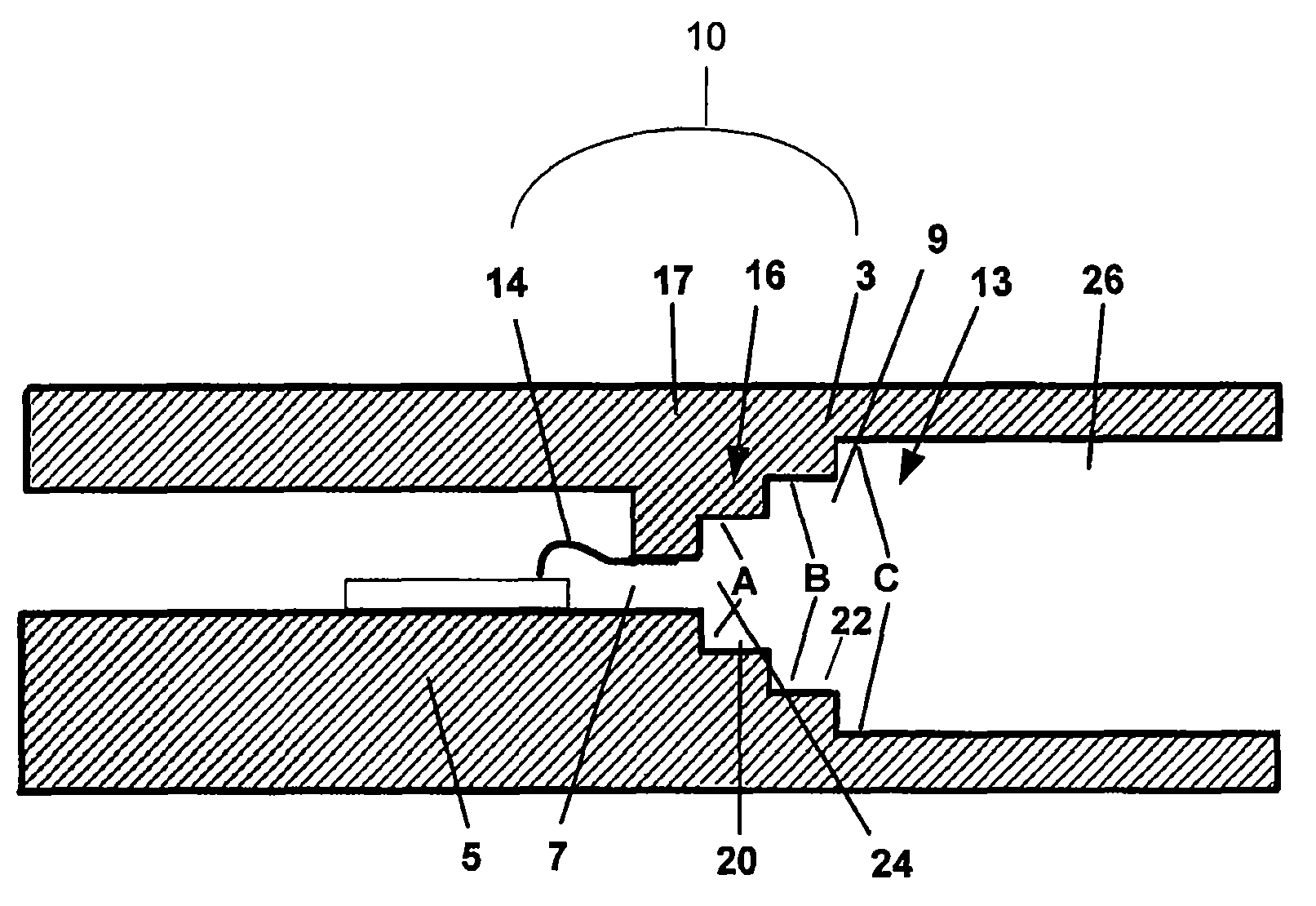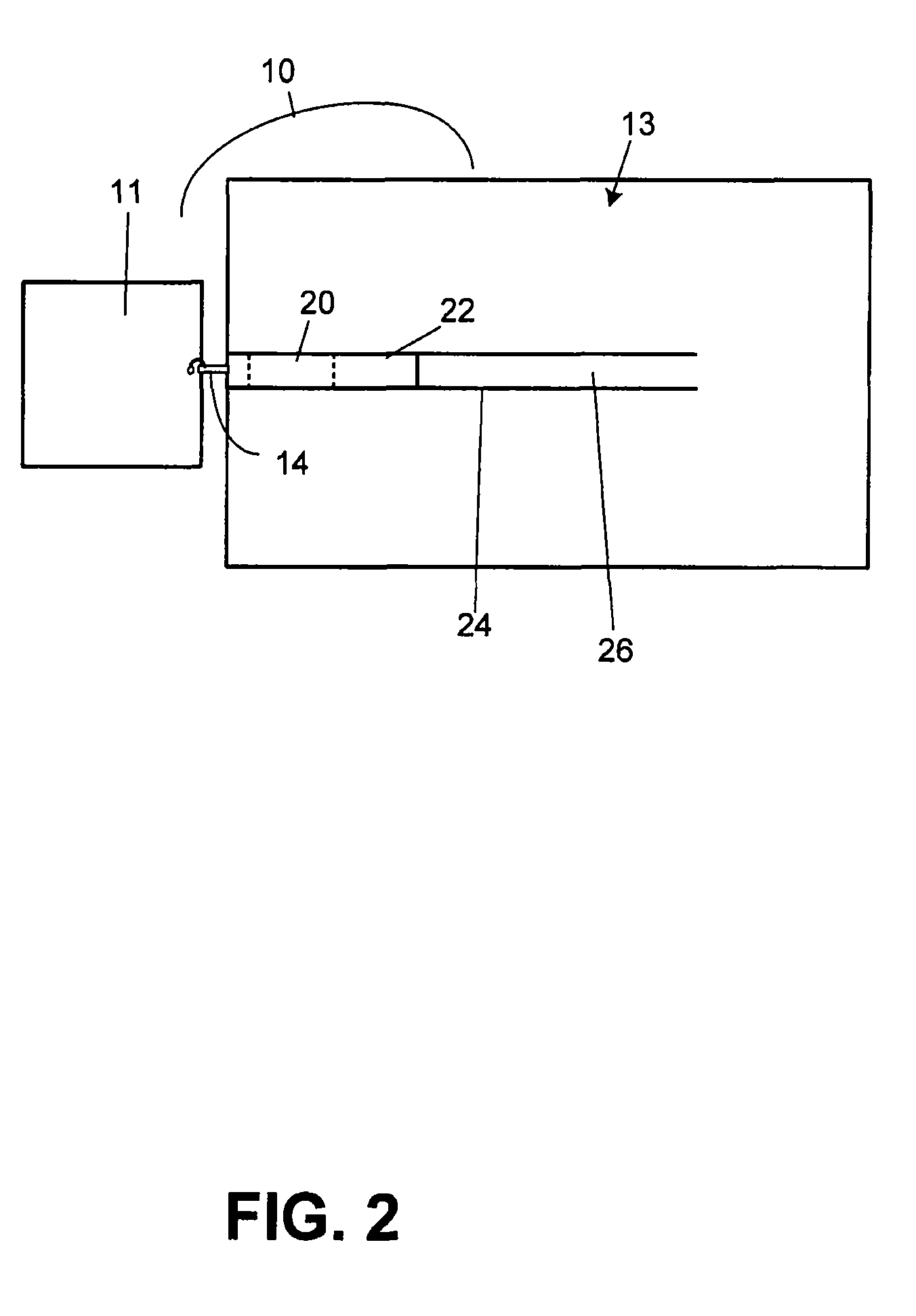Low-loss interface
a low-loss, interface technology, applied in the field of interfaces, can solve the problems of dielectric loss, signal/energy loss, and portion of signal loss
- Summary
- Abstract
- Description
- Claims
- Application Information
AI Technical Summary
Benefits of technology
Problems solved by technology
Method used
Image
Examples
Embodiment Construction
[0014]In accordance with one aspect of the present invention, an interface for connecting an integrated circuit to an energy transmission device such as a waveguide is disclosed. Throughout, the interface will be referred to as interface 10.
[0015]With reference to FIGS. 1-3, and in accordance with an exemplary embodiment of the present invention, an interface 10 is provided between an integrated circuit 11 and an energy transmission device 13. For example, interface 10 may be provided between a MMIC and a waveguide. Interface 10 is configured to be a low-loss interface and comprises a step launch 16 that directly connects circuit 11 to energy transmission device 13 without the use of dielectric materials. Interface 10 is configured to match the impedance and mode of energy wave propagation from circuit 11 to energy transmission device 13.
[0016]As shown in the exemplary embodiment depicted in FIG. 1, interface 10 may be formed from two pieces of energy transmission material such as a...
PUM
 Login to View More
Login to View More Abstract
Description
Claims
Application Information
 Login to View More
Login to View More - R&D
- Intellectual Property
- Life Sciences
- Materials
- Tech Scout
- Unparalleled Data Quality
- Higher Quality Content
- 60% Fewer Hallucinations
Browse by: Latest US Patents, China's latest patents, Technical Efficacy Thesaurus, Application Domain, Technology Topic, Popular Technical Reports.
© 2025 PatSnap. All rights reserved.Legal|Privacy policy|Modern Slavery Act Transparency Statement|Sitemap|About US| Contact US: help@patsnap.com



